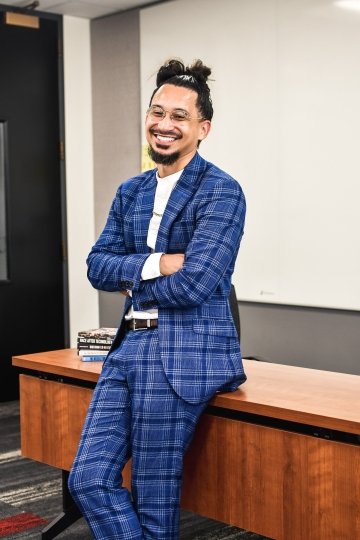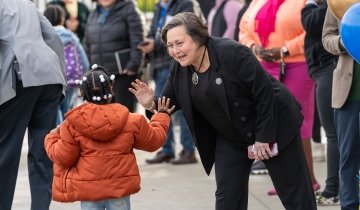Programs that provide K–12 students with electronic devices have been around since the late 1990s. When the COVID-19 pandemic hit in March of 2020, many schools were lucky to have existing 1:1 computer programs, and those that didn’t scrambled to get up to speed as quickly as possible.
The aim of these programs is to provide equal access to technology to all students, and they are seen as a way for districts to combat disparities between White and Black students. As researchers have uncovered, the execution of these programs is key to their success. Simply supplying students with laptops hasn’t been shown to be effective—students and teachers must be trained to use the technology. And, just as importantly, teacher biases must also be considered as schools execute these 1:1 technology programs.
How they did it
In new research conducted by USC Rossier Dean’s Professor of Educational Equity Brendesha Tynes and two of her former students, Assistant Professor at Johns Hopkins School of Education Josh Schuschke PhD ’20 and Assistant Professor at Georgia State University Ashely Stewart PhD ’21, the trio has studied how teacher expectations of Black students in the classroom affected student experiences in a 1:1 technology program. The study and its findings have been published in the Journal of Negro Education.
The researchers conducted the study at a historically Black high school on the West Coast with a college-going culture. The student body of the school, primarily Black and Latinx students, are routinely recognized for their high academic achievements. The researchers selected three classes to observe over the course of a school year: a U.S. History class taught by an Asian woman, a computer science class taught by a White man and an AP government course taught by a White man. The classes were observed, and field notes were recorded and analyzed. Students were also given the opportunity to fill out an online survey about their experiences in their classes, their use of technology at home and at school, as well as questions about their race and identity.
What they learned
After analyzing the collected data, the researchers found that teacher expectations of their students can either promote or negate Black students’ use of technology in the classroom. “Specifically, raised expectations of Black students lead to enthusiastic, innovative, and culturally specific use of technology. Conversely, lowered expectations lead to a lack of rigorous use of technology and disengagement with class subjects,” the researchers found.
In the article, the researchers provide several examples of specific incidents observed. In one case, a White male teacher expressed doubts in a Black girl’s ability to perform well in his computer science class. These lowered expectations were expressed to one of the researchers in an interview and to the students themselves.
Alternatively, the researchers detail another classroom incident in which an Asian female teacher praises a Black male student for his expertise with technology, going so far as to give him the nickname “B-tech.” These sorts of encouraging interactions appear to make a difference to students, as suggested in the student responses to the researchers’ surveys.

The team found that in the classes where teachers had higher expectations for their students’ abilities, students reported “a greater appreciation for the technology and the lessons.” These raised expectations also encouraged students to use technology in innovative ways when completing coursework.
The researchers summarize that raising levels of expectations for students in schools with 1:1 programs is required for a program to be successful. Lead author Josh Schuschke adds that “teachers believing and expressing raised expectations with digital tools can generate learning opportunities that affirm Black youth culture and technological skills, particularly at the intersection of race and gender.”
Guidance for improvements
Based on the team’s findings, they suggest that schools that use 1:1 programs should not only require teachers to receive training to bolster their tech skills but to also provide training on how to use Culturally Responsive Computing (CRC) framework in their classrooms. The CRC framework derives from culturally responsive teaching and has five core tenants:
(a) all students are capable of digital innovation
(b) learning contexts are supportive of students’ transformational technology use
(c) learning about the self through intersectionality promotes technical innovation
(d) technology should be used as a tool for reflection and understanding of identities
(e) technological success should be considered based on creative intent and social significance, as opposed to meeting mandates of an arbitrary curriculum.
The framework, researchers believe, “will help teachers raise expectations for Black students and provide opportunities for students to maximize the benefits of educational technology and innovation.” Tynes added that “our research confirms that access is not enough. Black students can be in computer science classes with a laptop, but can have vastly different learning experiences than their Latinx counterparts that sit next to them. Schools that implement 1:1 programs need to help teachers recognize anti-Black racism as well as provide them with training in Black students’ strengths which include unique forms of creativity and technological ingenuity.”





